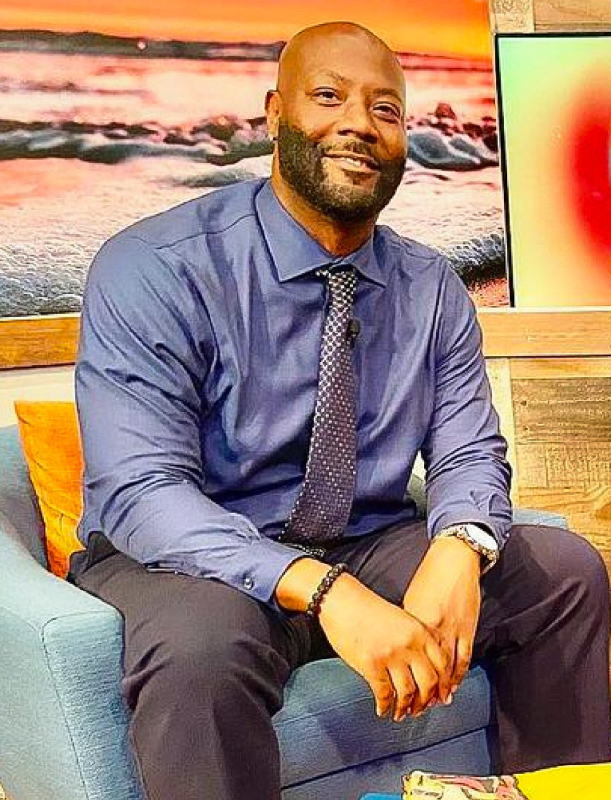The Artful Life Questionnaire: Reginald Green (San Diego, CA)

Reginald Green. Photo courtesy of Mr. Green.
What we know for sure: We all have a story, and engaging with the arts helps all of us to tell our own stories on our own terms. We also know that there are ways to engage with the arts other than in formal cultural venues, and that sometimes it is more about the process of art making than it is about the end product. We also know that living an artful life, which is to say, living a life in which the arts and arts engagement are a priority means different things to different people based on their own interests, their communities, and many other factors, including equitable access. The Artful Life Questionnaire celebrates the diversity of ways we can make the arts a part of our lives, and, hopefully, inspires and encourages us to live our own unique versions of an artful life. In today’s edition of the questionnaire, we’re speaking with Navy veteran and artist Reginald Green.
NEA: Please introduce yourself.
REGINALD GREEN: I’m Reginald Green, a 15-year Navy veteran from Dallas, Texas. I’m a disabled veteran who uses art to heal and to advocate for other veterans. I’m an instructor/artist/participant/advocate at the Veteran’s Art Project (VetArt.Org).
NEA: Do you have a current art practice or a way of regularly engaging with the arts?
GREEN: I used to work with bronze metal. Due to the bronzing facility closing due to Covid, I began working with clay. I’m currently working with clay, Sculpey, resin, and glass. I do most of my art at home or at the VETART Center for Ceramics and Glass, a program that offers free art classes for veterans, active-duty [personnel], spouses of veterans, and caretakers.
NEA: What are five words that come to mind when you think about living an artful life?
GREEN: Five words describing me living an artful life: galleries, museums, healing, creative, art shows.
NEA: Pick just one of those words and expand on how you see it as part of living an artful life.
GREEN: I find myself constantly creating and preparing my artwork to be seen by others and the world. I recently learned about submitting my work to online art cafes, and my pieces have been selected to be shown in various galleries. So art shows and showing my creations are a big part of me living an artful life.
NEA: Where do you currently live, and what are some of the ways that your community tells its story through the arts or through creative expression?
GREEN: I currently live in San Diego, California, but work out of the VETART Center for Ceramics and Glass in Vista. The organization and myself use art to heal and [as a practice that] allows a creative outlet for veterans who suffer from PTSD and mental or physical traumas. We focus on mental wealth!
NEA: How do you think that living an artful life can improve the well-being of your community?
GREEN: I believe art is a form of therapy and helps people. I myself am a 100 percent disabled veteran who suffers from anxiety, depression, chronic migraines/headaches, and lower back pain. Art is a positive outlet that helps me take my mind off the pain. Art is healing and helps me a lot, so I advocate for other veterans by attempting to get more art programs provided within the communities. Art for therapy can give the community a creative outlet and positive form of expression.
NEA: Is there a particular place in your neighborhood that is a creative touchstone for you?
GREEN: A creative touchstone in my community would be Balboa Park due to the various museums and exhibitions that can be explored. The Spanish Village Art Center Sculpture Guild is where I visit often to get ideas or to see various works of art.
NEA: What’s your favorite informal way or space to engage with arts and culture?
GREEN: My favorite informal way or space to engage with arts and culture is checking out local art shows, galleries, and museums, or going to paint and sip art events.
NEA: Can you share an arts experience or moment of arts engagement that has had an identifiable impact on your life?
GREEN: I have a few experiences where art impacted my life, one of which is seeing one of my art pieces on the front cover of The Coast Newspaper. At that point I realized that I’m now an artist and need to create more. I ended up appearing in the local newspaper again after donating a hanging sculpture to the wife of a veteran and art class participant that passed away of a heart attack. His wife contacted me to let me know because he spoke so highly of me. I had no idea he did because he was so quiet. I felt it was meant for me to make something for his wife.
Then, when I sold my first medium-sized art piece, a lion-head jar, I realized that people are willing to pay for my work. Also, seeing how much people appreciate and like my artwork at the art cafes and shows that I have attended, it makes me feel valued and recognized for the first time. It’s a great feeling that has impacted my life in a positive way. Art has really helped pull me out of depression. I feel that I’ve found my passion and purpose, and I’m on my path and journey!





